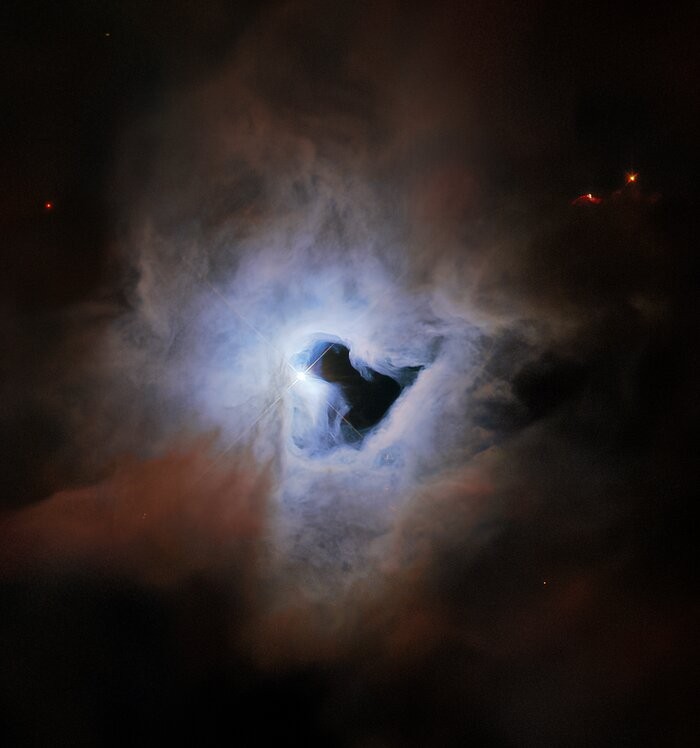Hubble's library is brimming with wondrous snapshots of the universe. The iconic telescope has been peering through millions of stars and galaxies for more than 30 years now, and this stirring and creepy picture of a nebula deep in space proves that the space observatory will continue to capture striking details of the cosmos.
As reported first by ScienceAlert, this stunning snapshot is referred to as a "cosmic keyhole" by experts. It is a remnant of a tiny multiple-star system named V380 Orionis, located in the constellation Orion.

The reflection nebula NGC 1999 is shown in this stunning image taken by the NASA/ESA Hubble Space Telescope. It is located in the constellation Orion. NGC 1999 is located close to the Orion Nebula, the area of massive star formation nearest to Earth, and is about 1350 light-years away. The NGC 1999 galaxy itself is a remnant of recent star formation; it is made up of debris from the birth of a young star.
Reflection Nebula
This eerie cosmic object, dubbed NGC 1999, is located not far from the Orion Nebula, the nearest star factory to Earth. This nebula is also around 1,350 light-years away from our planet.
According to NASA, NGC 1999 is an example of a reflection nebula. It is similar to a fog around a street lamp since it only shines when the light from an embedded source illuminates its dust. Hence, it does not produce any visible light on its own.
A bright, recently formed star, seen in the Hubble image slightly to the left of the center, illuminates the NGC 1999 nebula. This star, named V380 Orionis, has a surface temperature of roughly 10,000 degrees Celsius.
NASA noted that the nebula's mass is 3.5 times as massive as the sun's. The NGC 1999 reflection nebula is visible in this photo since a remnant cloud material encircles it by a newly-formed star.
Read also: NASA's Hubble Space Telescope Captures a Strange Astronomical Explosion Surrounding a Young Star
Bok Globule
A striking jet-black cloud that resembles a tilted letter T is also visible at the center of NGC 1999 in the WFPC2 image. This ominous cloud illustrates a "Bok globule, " named in memory of the late University of Arizona astronomer Bart Bok.
The globule is an extremely dense cold cloud of gas, molecules, and cosmic dust that completely obscures the light behind it. The globule appears silhouetted in the Hubble image against the V380 Orionis-lit reflection nebula.
The contraction of the dust and molecular gas under the gravity of the Bok globules is thought to be the process by which new stars are potentially formed, according to NASA.
Sir William Herschel and his sister Caroline discovered NGC 1999 about two centuries ago, and it was later listed in the New General Catalogue as "object 1999".
Related Article: NASA's Hubble Space Telescope Captures 'Butterfly Nebula' In Stunning Motion | Fun Facts About This Beautiful Space Butterfly
This article is owned by Tech Times
Written by Joaquin Victor Tacla









